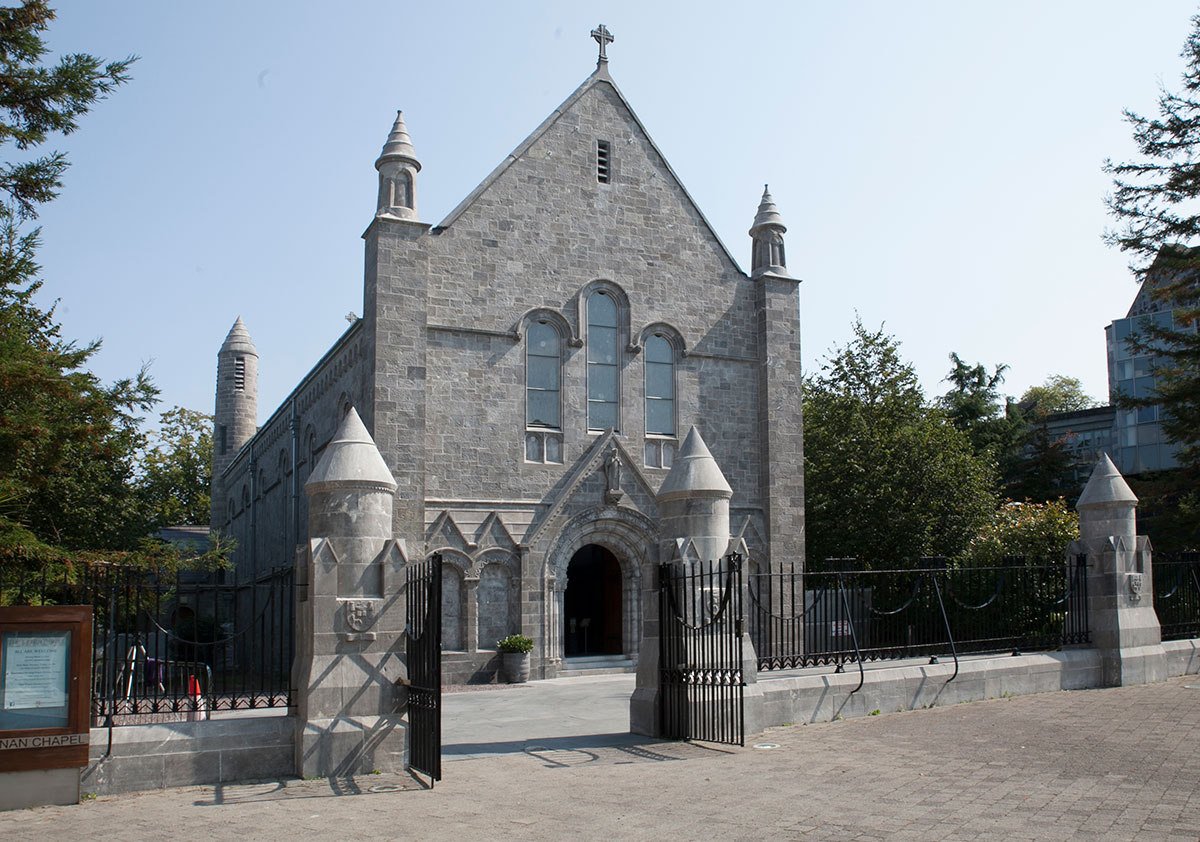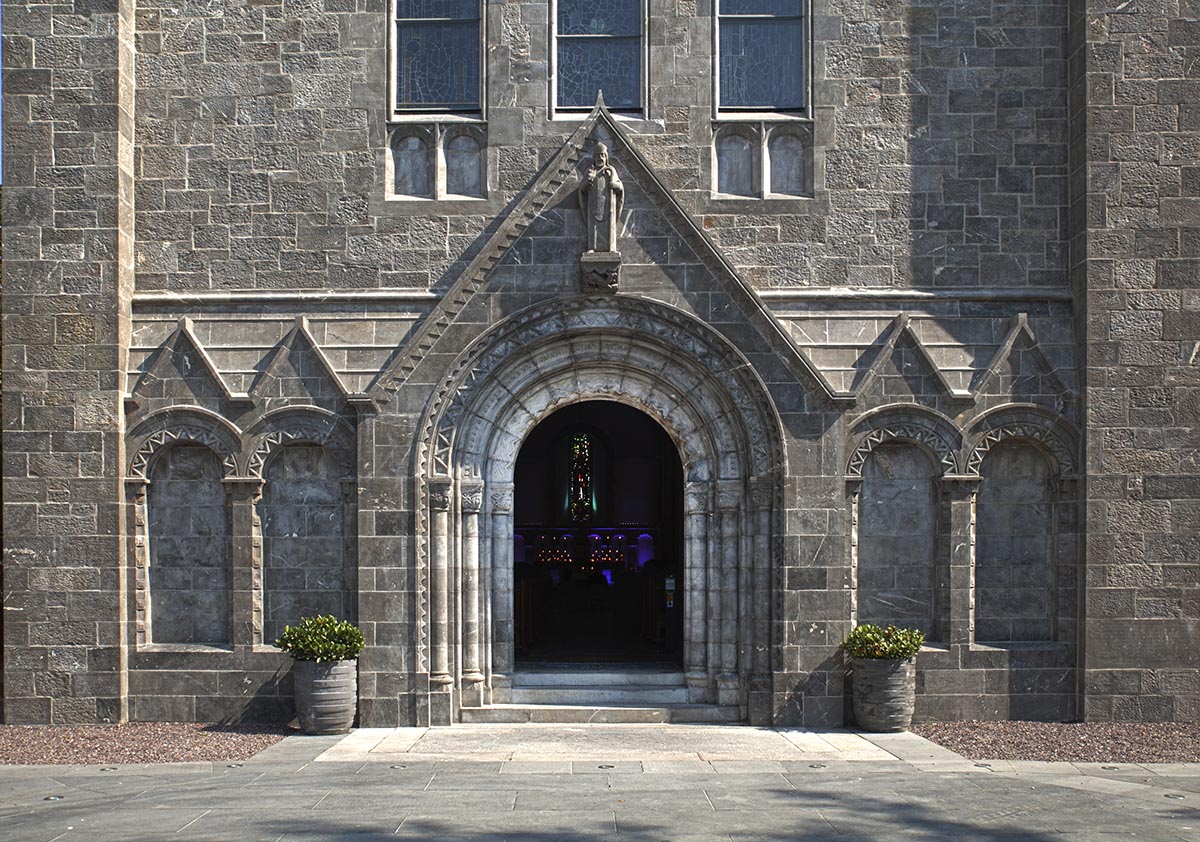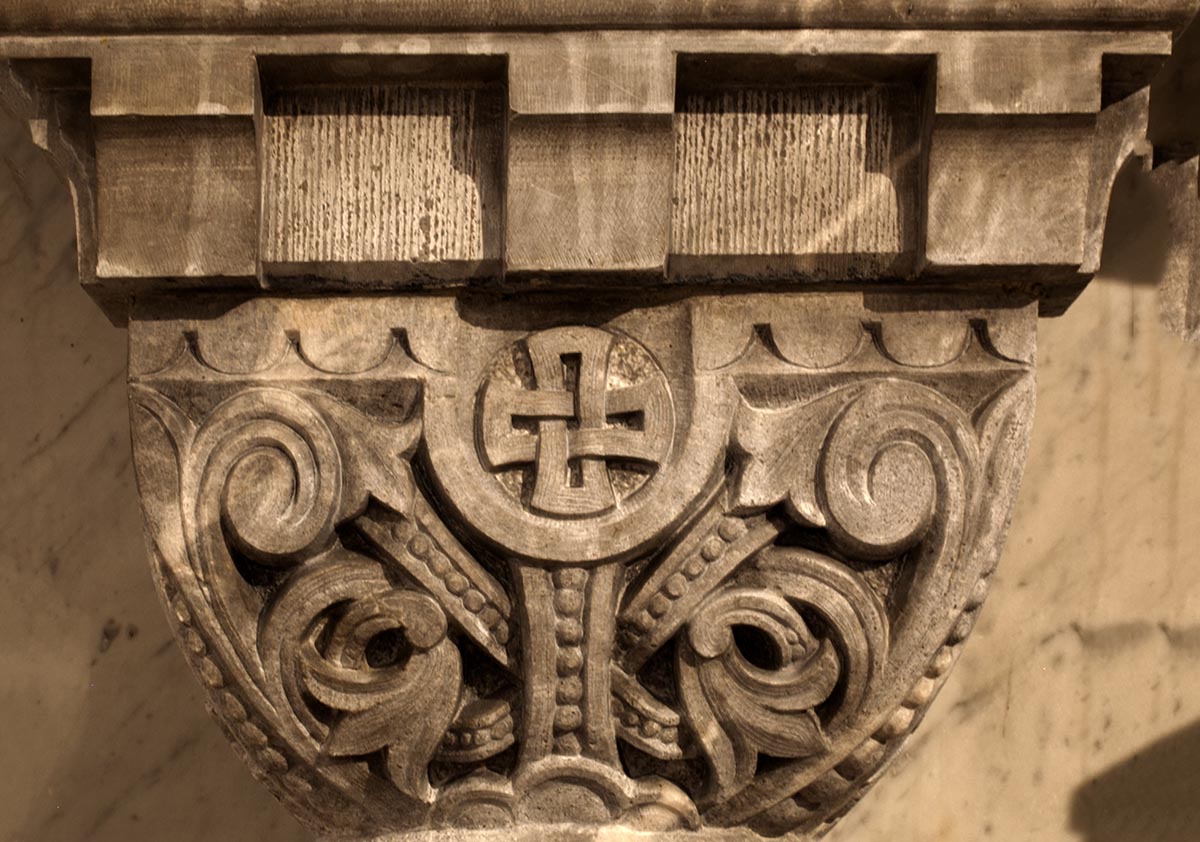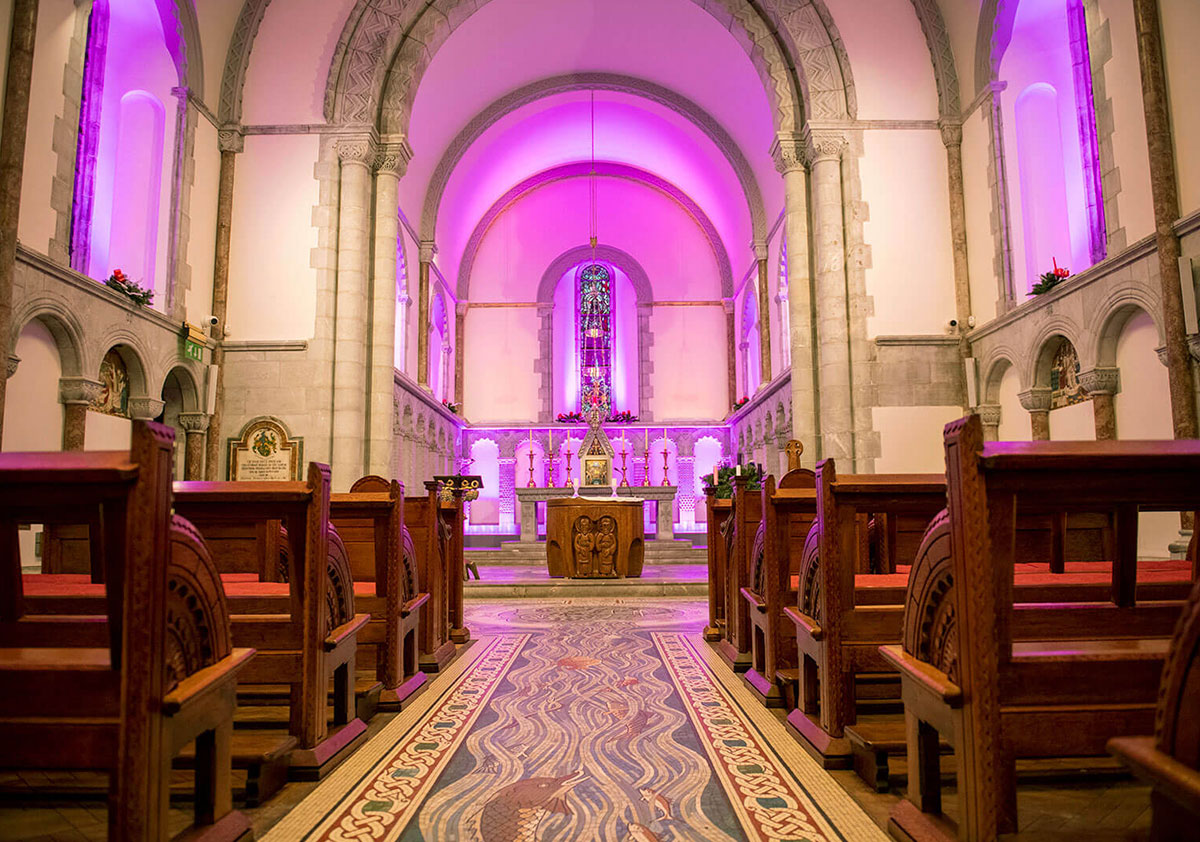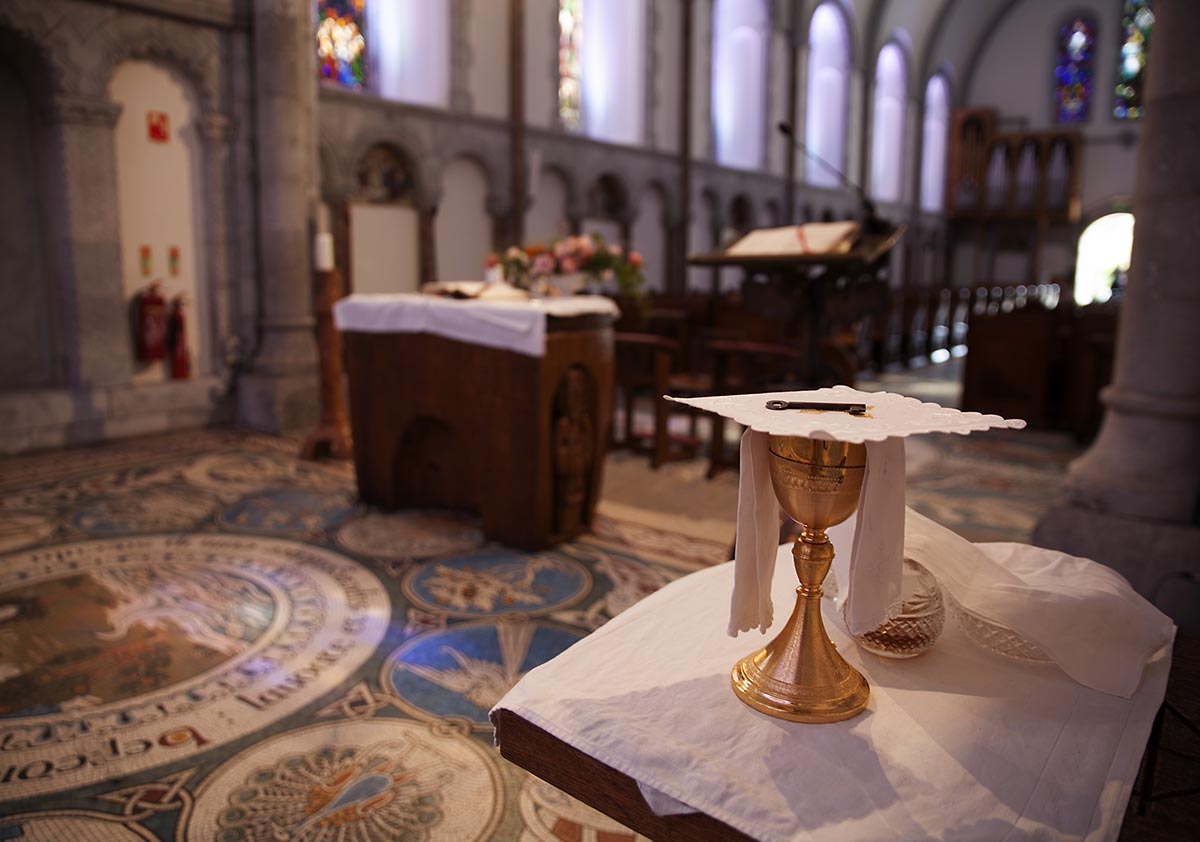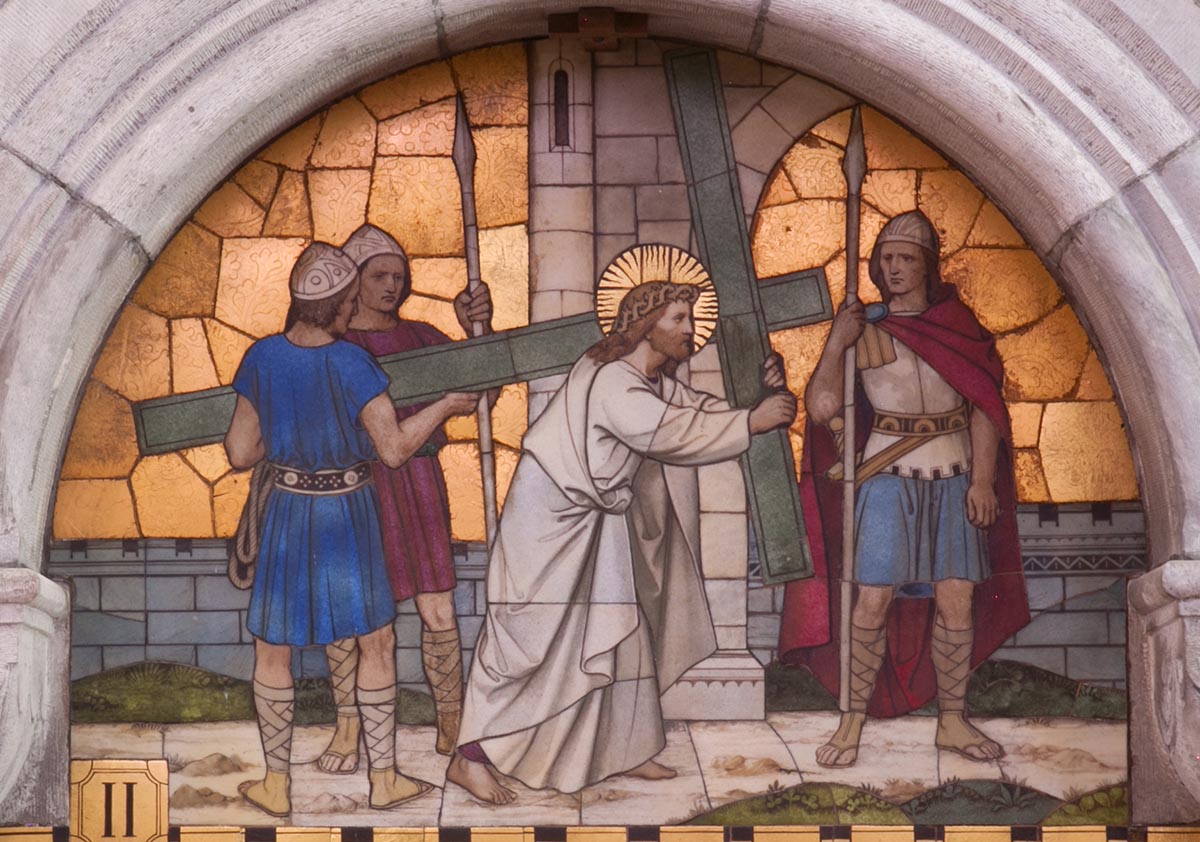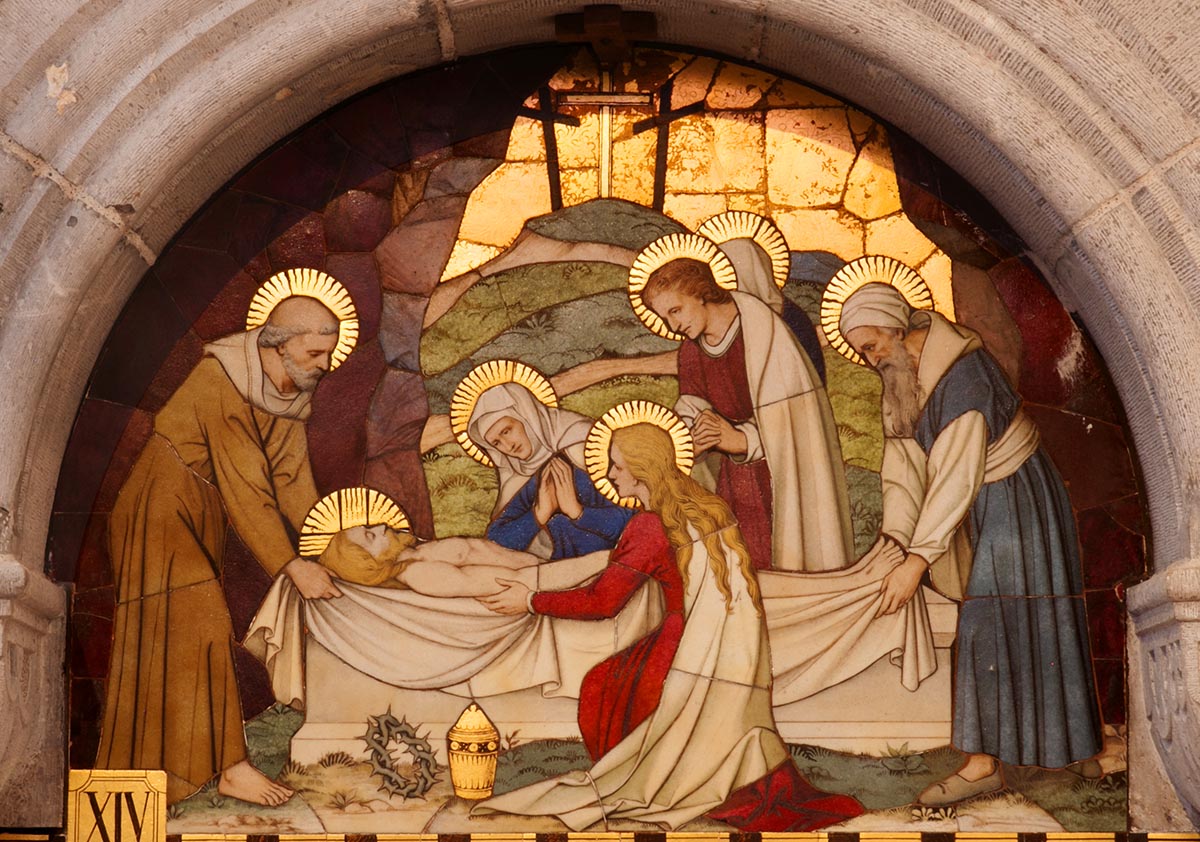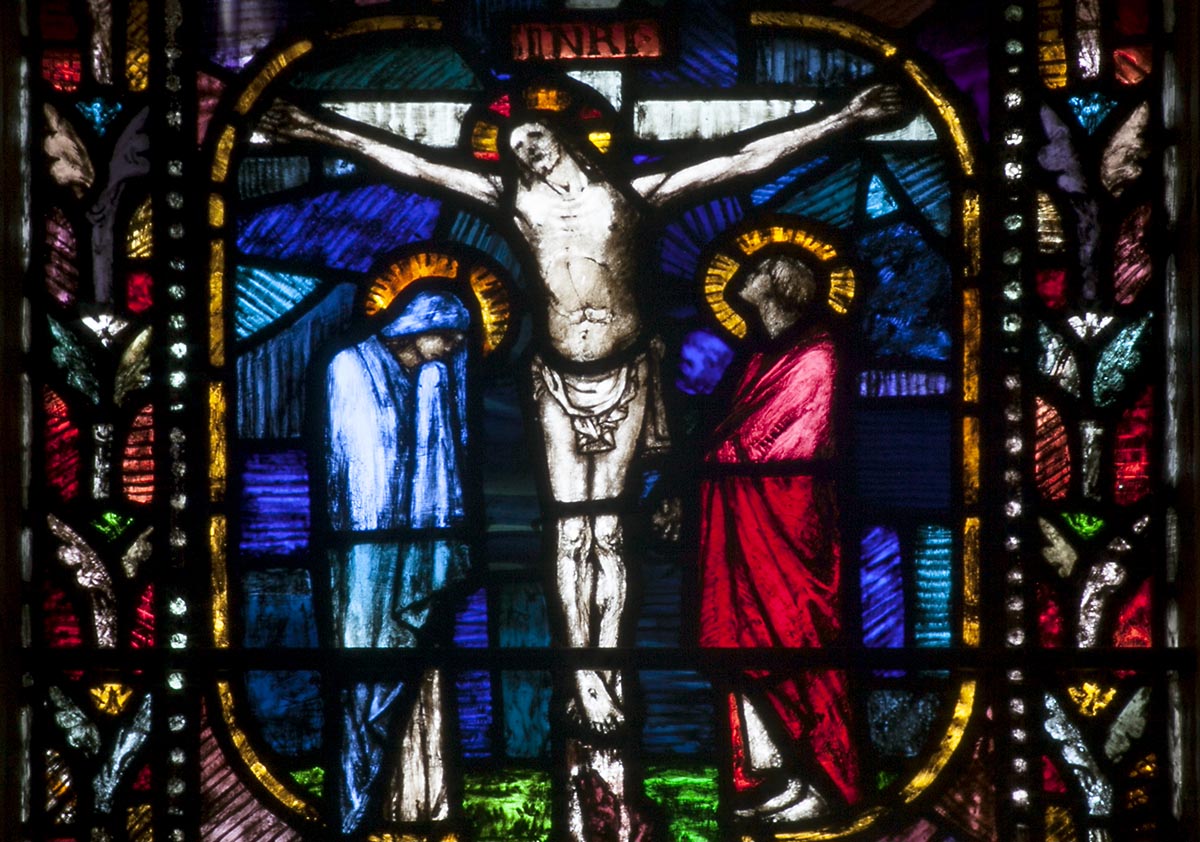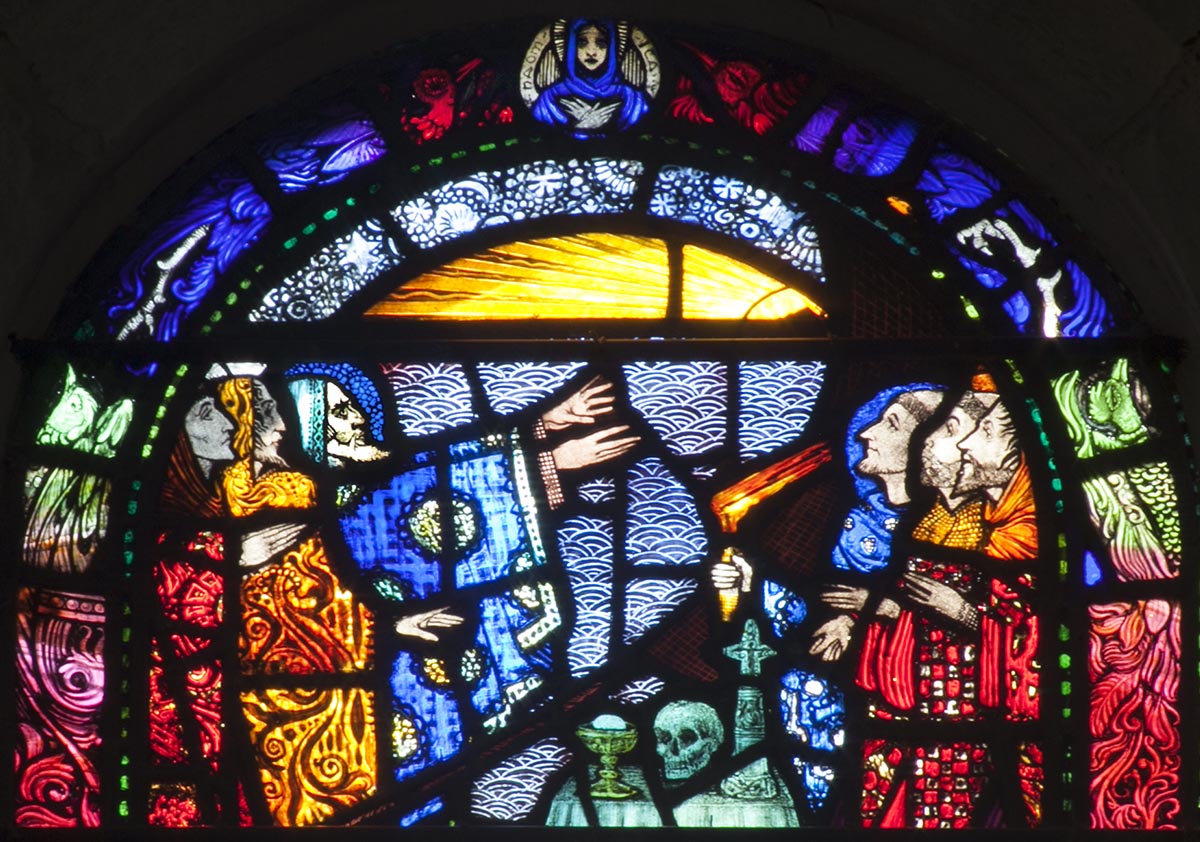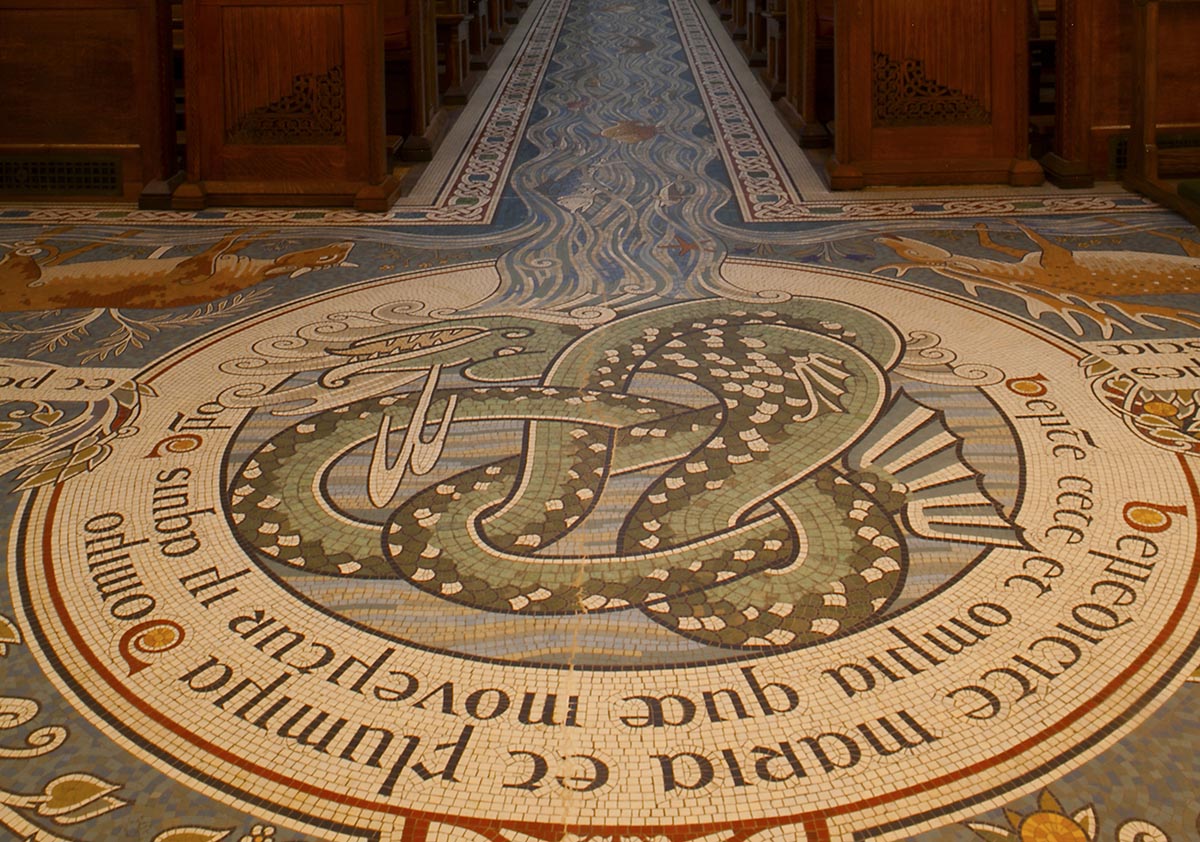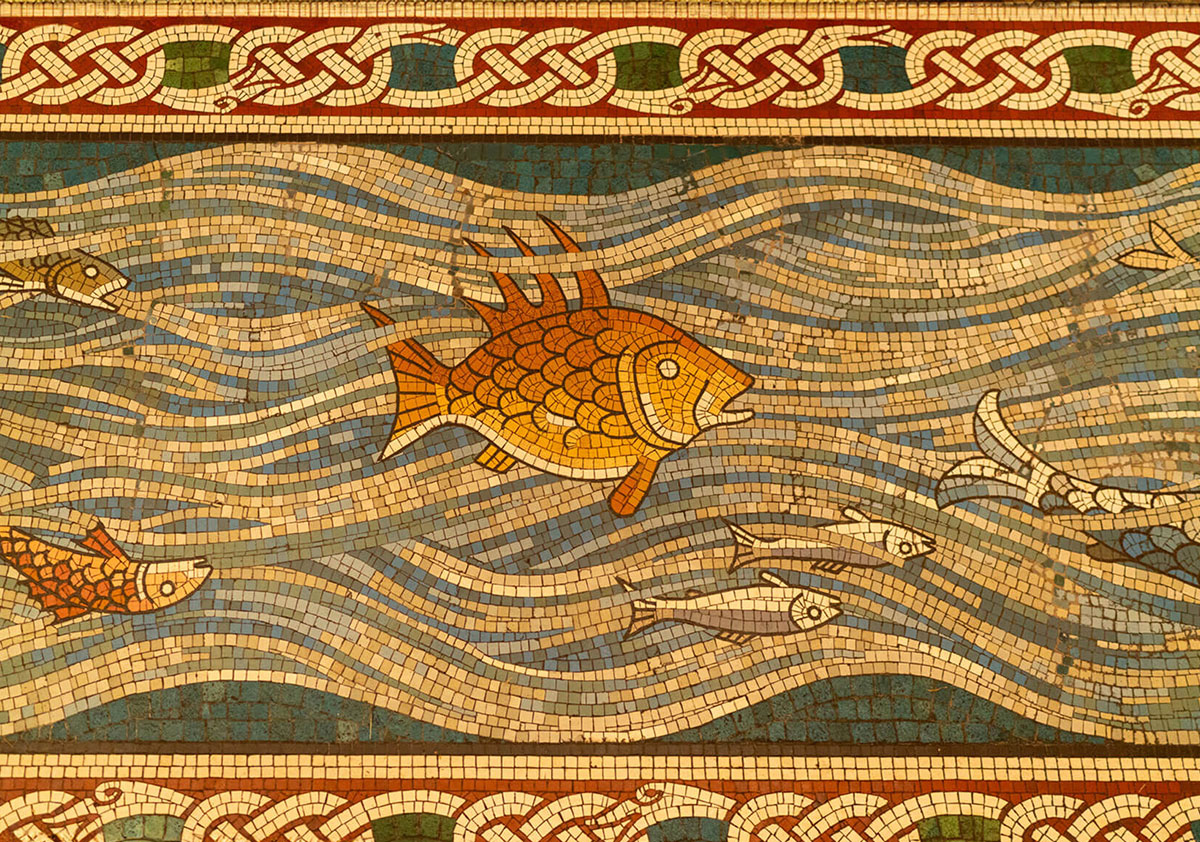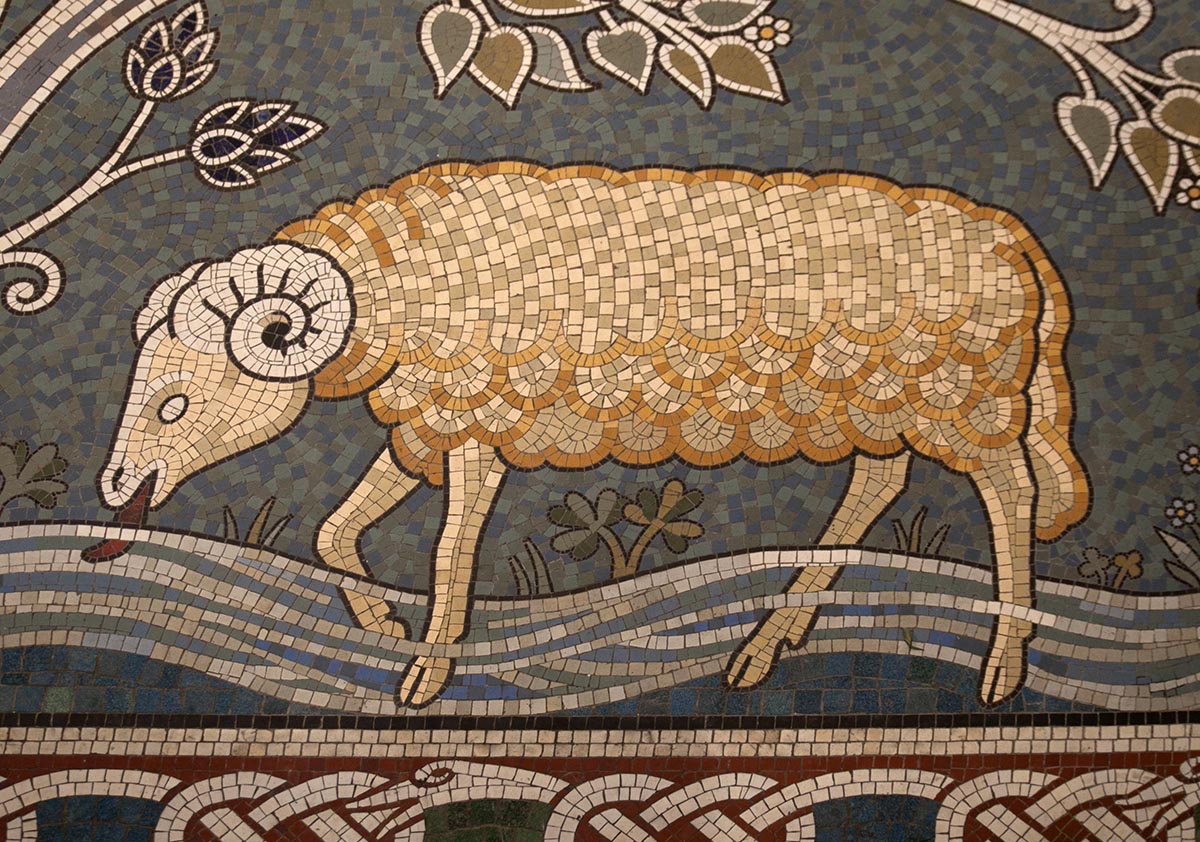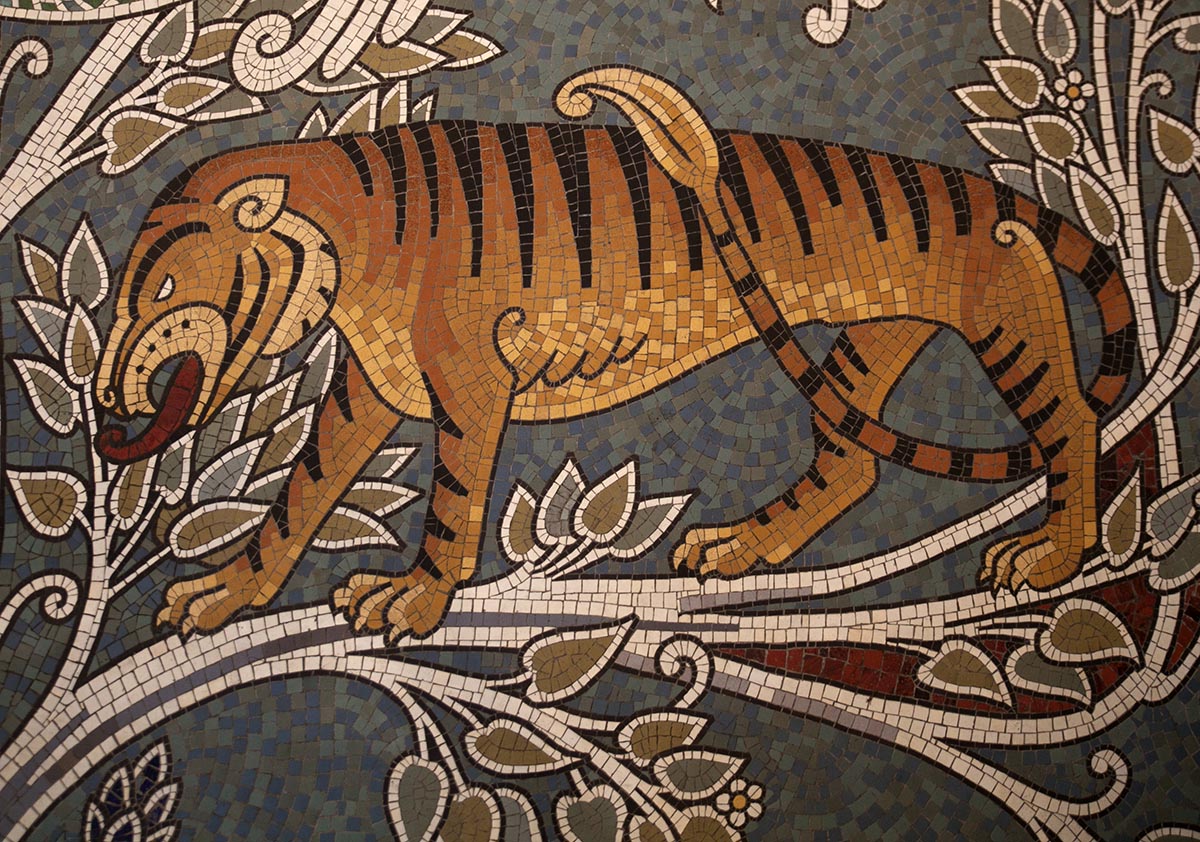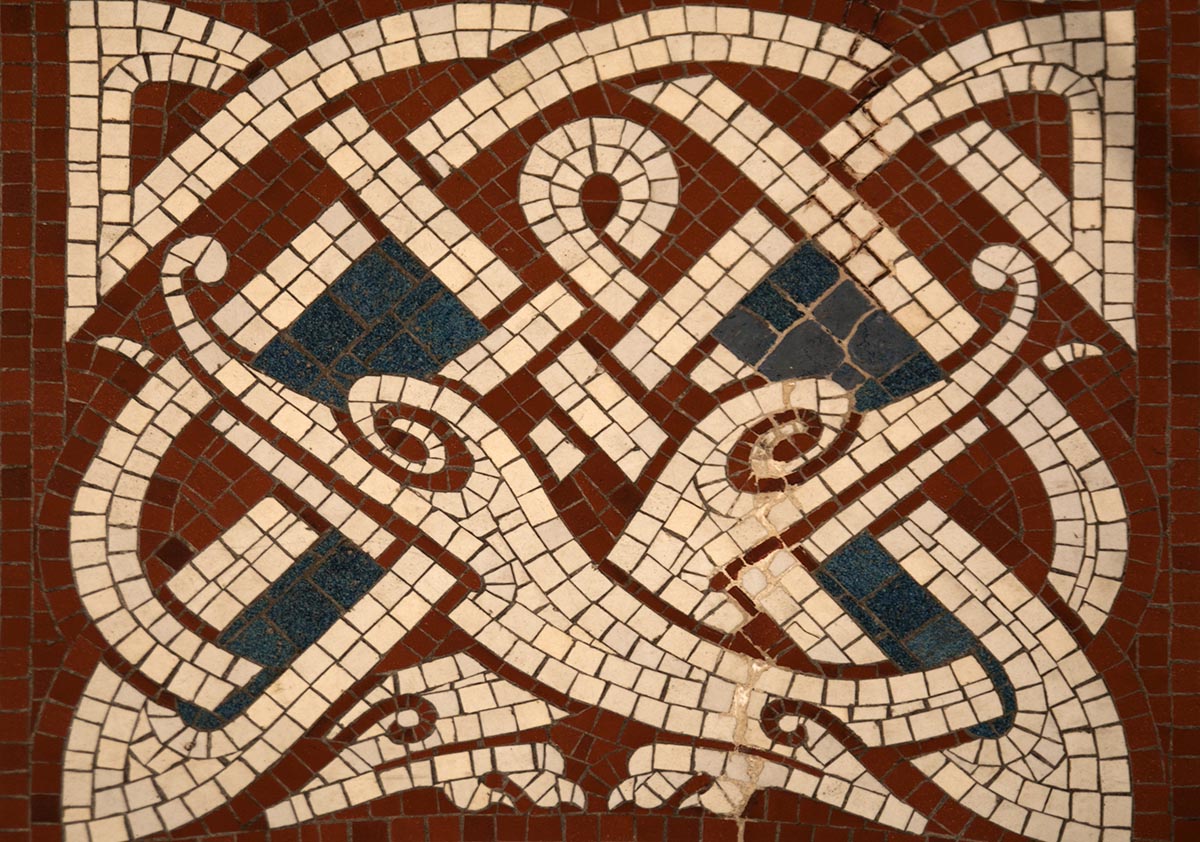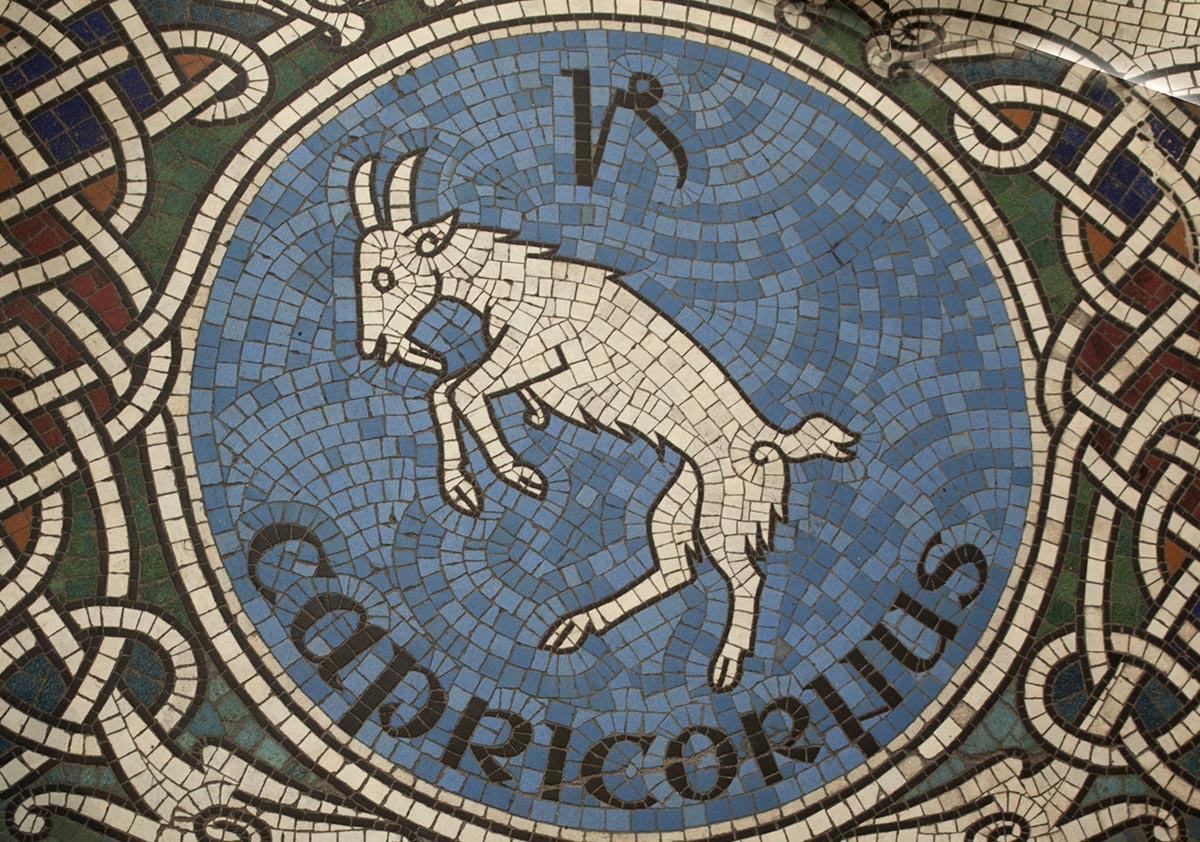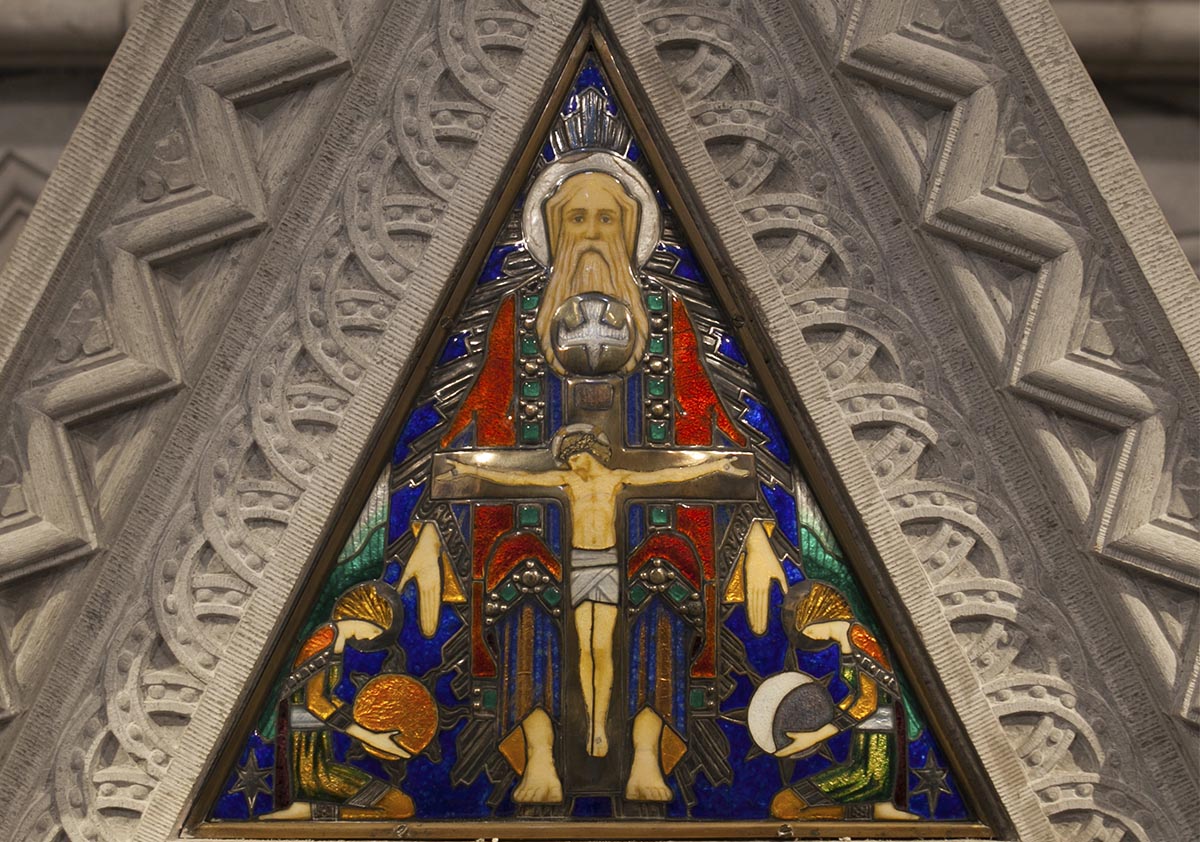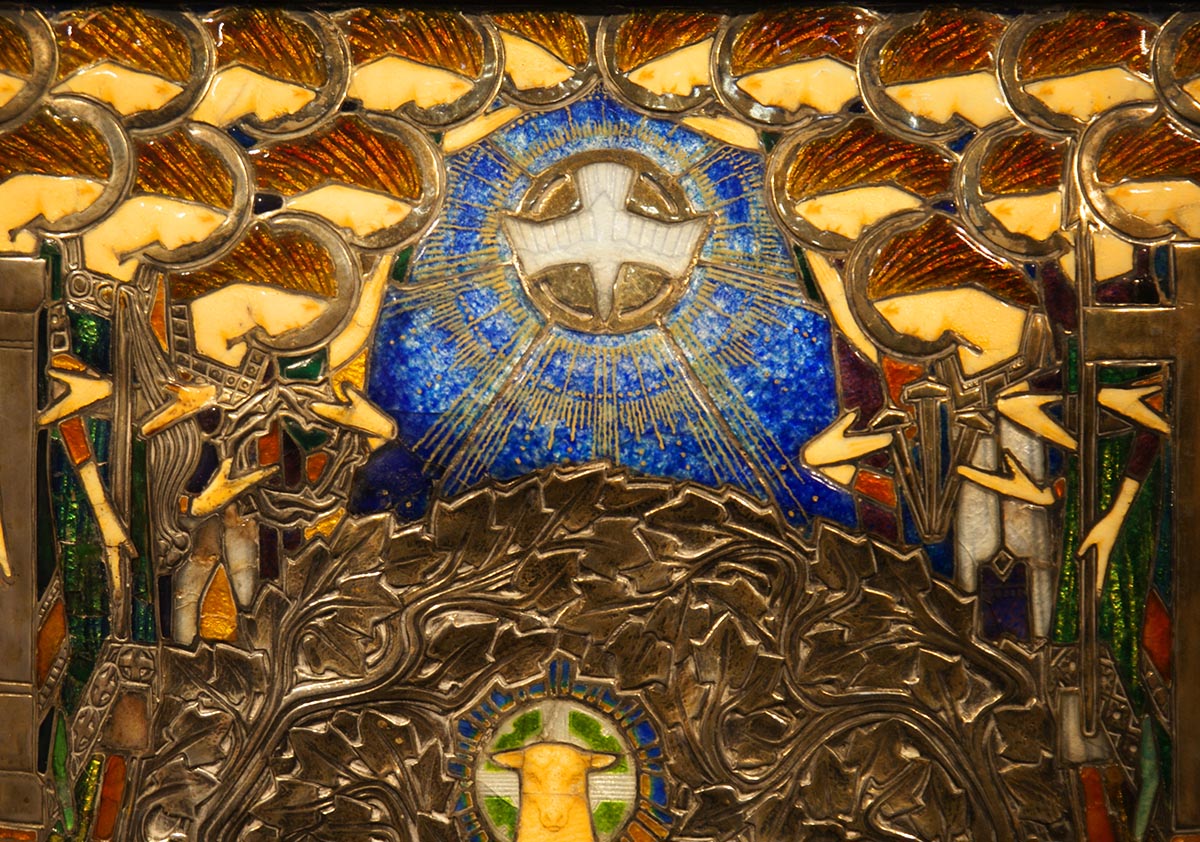History of the Honan Chapel
Share our History and Heritage
The Honan Chapel was completed during the middle of the First World War – a unique time in history and one of political upheaval in Ireland. At this time, there was a renewed appreciation and creation of Irish Arts and Crafts – and the design and completion of the Honan Chapel reflected this contemporary approach. Built and furnished within a short period of about three years, the Chapel shows a pride in Ireland’s past and hope for its future. It is recognised as a sacred place of great historical and cultural significance, standing proud in a city with an impressive history of art and education.
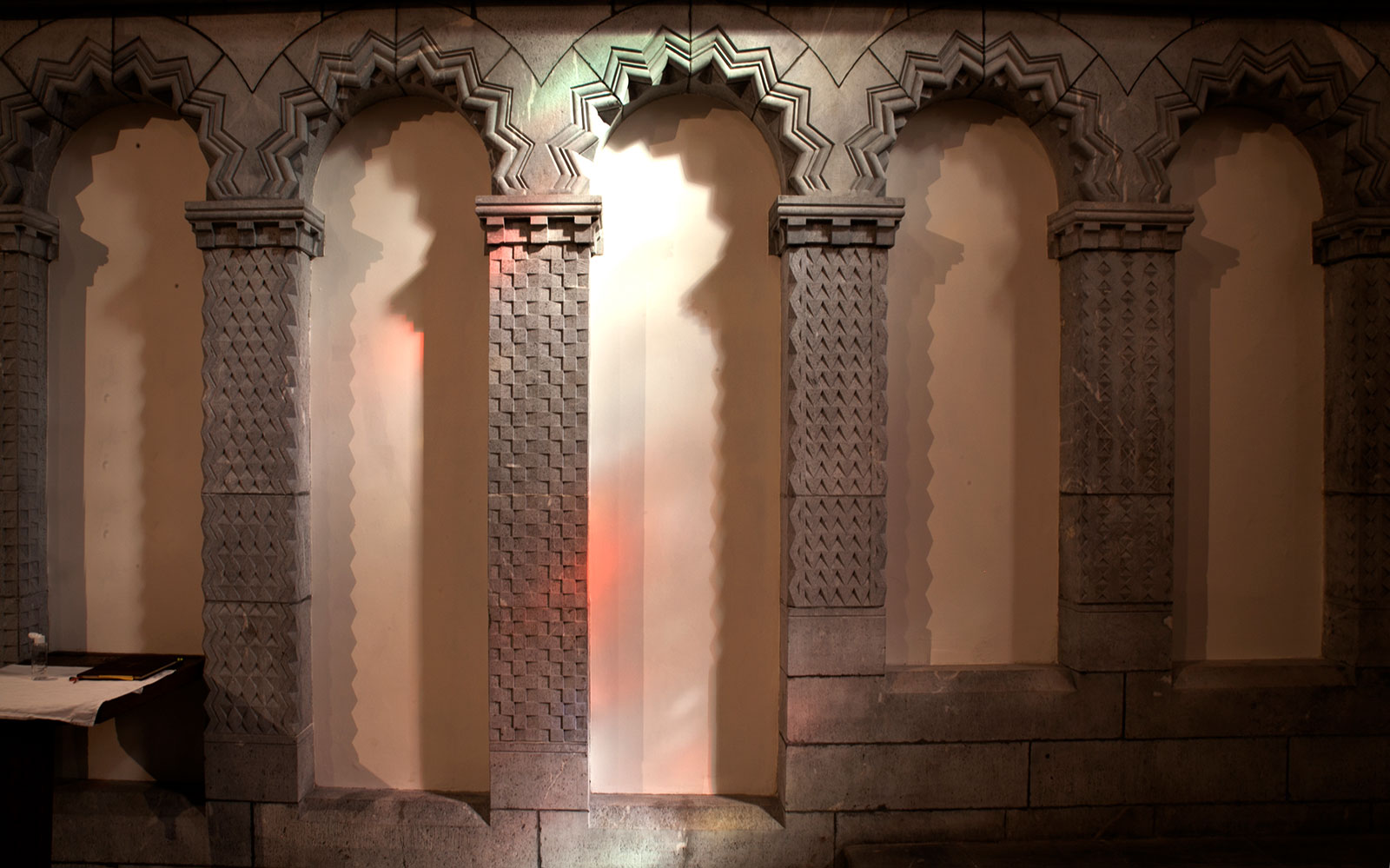
“Artists of the highest calibre within Ireland were used in conjunction with contemporary European art circles. Their commitment to the project was such that they overcame the difficulties of supply in wartime and many of them achieved the greatest works of their creative lives.”
James G. R. Cronin, University College Cork
The Story and Significance of the Honan Chapel
The Honan Chapel is internationally regarded as representing the best artwork of the Irish Arts and Crafts movement (1894-1925). At the time of its inception, Ireland was on the threshold of political independence, and designers were searching for a new sense of Irish national identity. To achieve this, they looked back to the traditions of Celtic art and Hiberno-Romanesque architecture and blended these with contemporary Art Nouveau style. The Chapel uniquely illustrates the role played by the Dublin artistic schools in helping to renew Cork craftsmanship in the first decades of the twentieth century.
The Goal
The project owes its origins to the philanthropy of Isabella Honan who died in 1913 and left her estate to the founding of this commission. Rev. Sir John Robert O’Connell became her legal executor and was the mastermind behind the development of the Honan Chapel.
At the turn of the century, Rev. O’Connell was a philanthropist with a refined civic sensibility. Educated by the Jesuits at Belvedere College he later joined its board of governors and ran the firm of T. F. O’Connell & Son, solicitors in Dublin, which had a very extensive practice. He was a committee member of the Arts and Crafts Association and a member of the senate of the University of Dublin. He enjoyed a good relationship with Sir Bertram Windle, the president of University College Cork, and in him O’Connell found an enthusiastic advocate for the Celtic Revival and Arts and Crafts philosophy of educational and social improvement.
In 1914 and with the support of Windle and the Munster bishops, O’Connell purchased St. Anthony’s Hall (later renamed the Honan Hostel) for the lodging of Catholic students at the University. Largely responsible for its refurbishment, O’Connell drew up plans that included the designing of a chapel on the hostel grounds which would be built in the Hiberno-Romanesque style. Together, O’Connell and Windle insisted that its design represent the best of Irish artistic traditions and showcase fresh Irish artists. Cork craftsmen were employed to provide work for the local community and to encourage local talent.
Local architectural firm, McMullen & Associates, designed the chapel and it was built by John Sisk & Son of Cork.
Timeline
Death of Isabella Honan
Through her will she bequeathed a sum of money for the construction of the Honan Chapel.
Honan Hostel Plans drawn up
The plans included the designing of a chapel on the hostel grounds which would be built in the Hiberno-Romanesque style.
Building of Chapel commences
Foundation stone laid on May 18th – the chapel is built in the Hiberno-Romanesque style by John Sisk and Sons, Cork and designed by James F. McMullen (architect).
Chapel Consecration
The chapel is consecrated and open for worship on November 5th. This begins the occupation of the Chapel as a special place in the spiritual life of UCC.
Chapel Reimagined
In order to reflect the changes introduced by the Second Vatican Council, the sanctuary of the Chapel is re-ordered with the aesthetic sympathy of the original intentions of those who built the Chapel. The architect engaged was the renowned Richard Hurley. Some of Ireland’s finest artists and sculptors (notably Imogen Stuart, Ken Thompson, Eric Pearce, Kenneth Ross and others) supply furnishings, textiles and organ.
‘The Craftsman’s Honoured Hand’
UCC Heritage and Visual Arts Office and the Honan Trust organise a conference ‘The Craftsman’s Honoured Hand’ which focused on the richness and variety of the Honan Chapel and Collection.
‘A Golden Vision’
Cork University Press publish ‘The Honan Chapel – A Golden Vision’ edited by Virginia Teehan and Elizabeth Wincott Heckett – showcasing for the first time the Honan Collection of liturgical art.
Centennial Celebration
The Honan Chapel celebrates 100 years.
Chapel Restoration
The Honan Chapel undergoes a €1.3 million restoration project. Funded privately by generous donors, the works are undertaken by Costello Construction, Kilmallock, Co Limerick. The architect engaged for the restoration of the chapel was Peter Murphy, FMP Architects, Cork.
The Chapel’s Famous Features
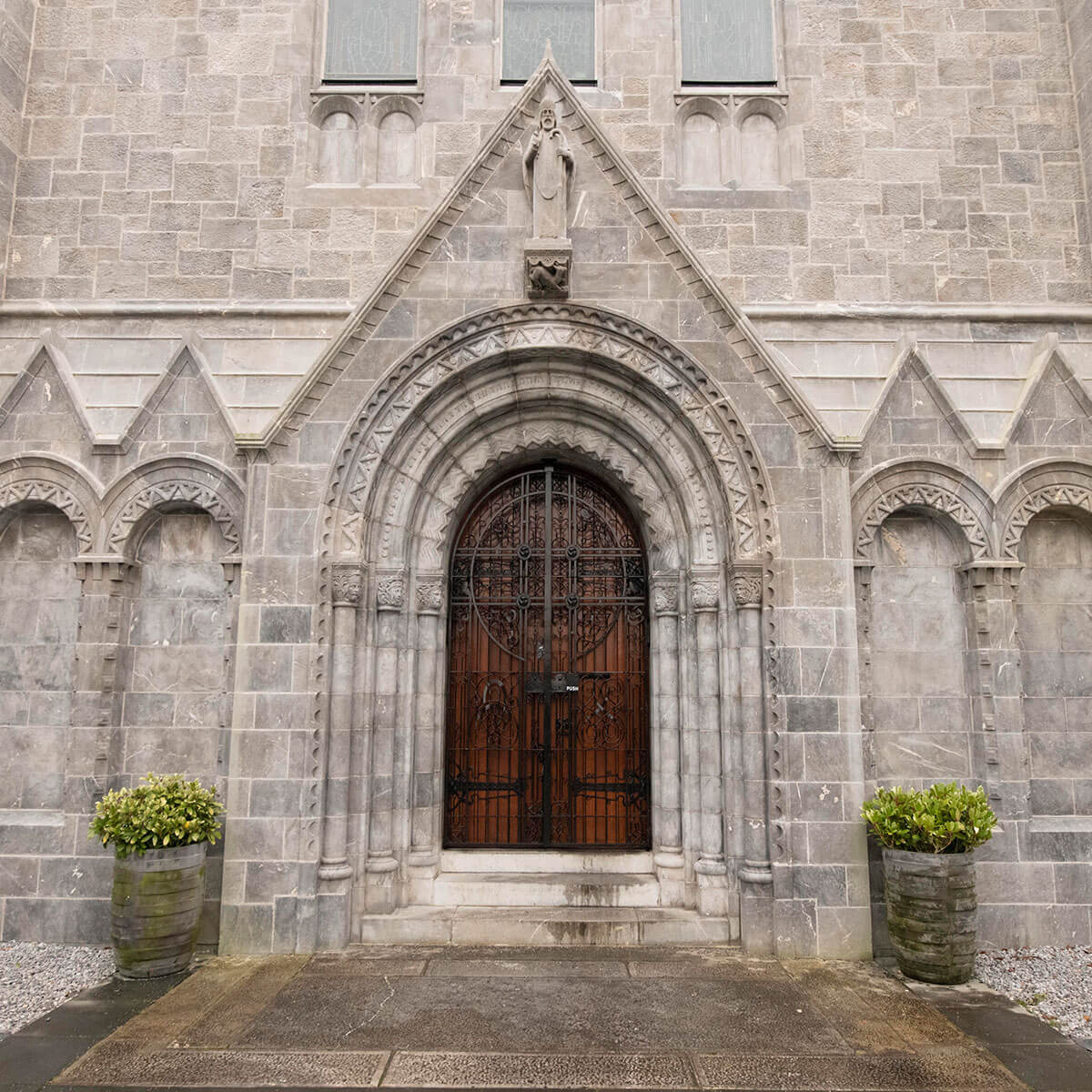
The Stonework
Henry Emery of Dublin was assisted by Cork Technical School (now the Crawford Art Gallery) apprentices in the carving of the stone capitals of Munster Saints which frame the Chapel’s entrance.
The Doors
These are hung on wrought-iron strapwork hinges designed by William A. Scott, professor of architecture in University College, Dublin, and made by the metalworkers J&C McGloughlin & Sons, Dublin, who also manufactured the grill. The design draws inspiration from common Celtic designs in Insular art: the spiral, triskele and interlace.
The Stained Glass Windows
The young stained-glass artist, Harry Clarke designed eleven of the Chapel’s nineteen windows. In his work for the Honan, Clarke fused Art Nouveau, Secessionist and Symbolist artistic styles with Celtic tradition. Early Irish saint St. Gobnait is depicted in the Chapel’s most photographed Clarke window and the saint’s patronage of bees is suggested by honeycomb tracery. His first commission, the Honan Chapel was instrumental in establishing Clarke’s reputation and he is internationally recognised as one of Ireland’s finest stained-glass artists of the early twentieth century.
Other stained-glass windows represent the work of local craftswomen. Some were designed by the cooperative An Túr Gloine (The Glass Tower). An Túr Gloine was a pioneering stained glass studio, founded in 1903 by portrait painter Sarah Purser, with the help of Irish cultural activist Edward Martyn and English stained glass artist Alfred E. Child. The studio provided an alternative in Ireland to commercial stained glass imported from England and Germany. Artists were trained in every detail connected with the design and production of the glass, from the enamelling to cutting, leading, and kiln firing. The cooperative employed notable female artists such as Evie Hone, Wilhelmina Geddes, Beatrice Elvery, Ethel Rhind, and Catherine O’Brien. The Chapel also includes examples of the work of Ethel Rhind in the design of the St. Carthage of Lismore window, Catherine O’Brien in the St. John window which faces the altar and the Risen Christ above the altar by Alfred Child.
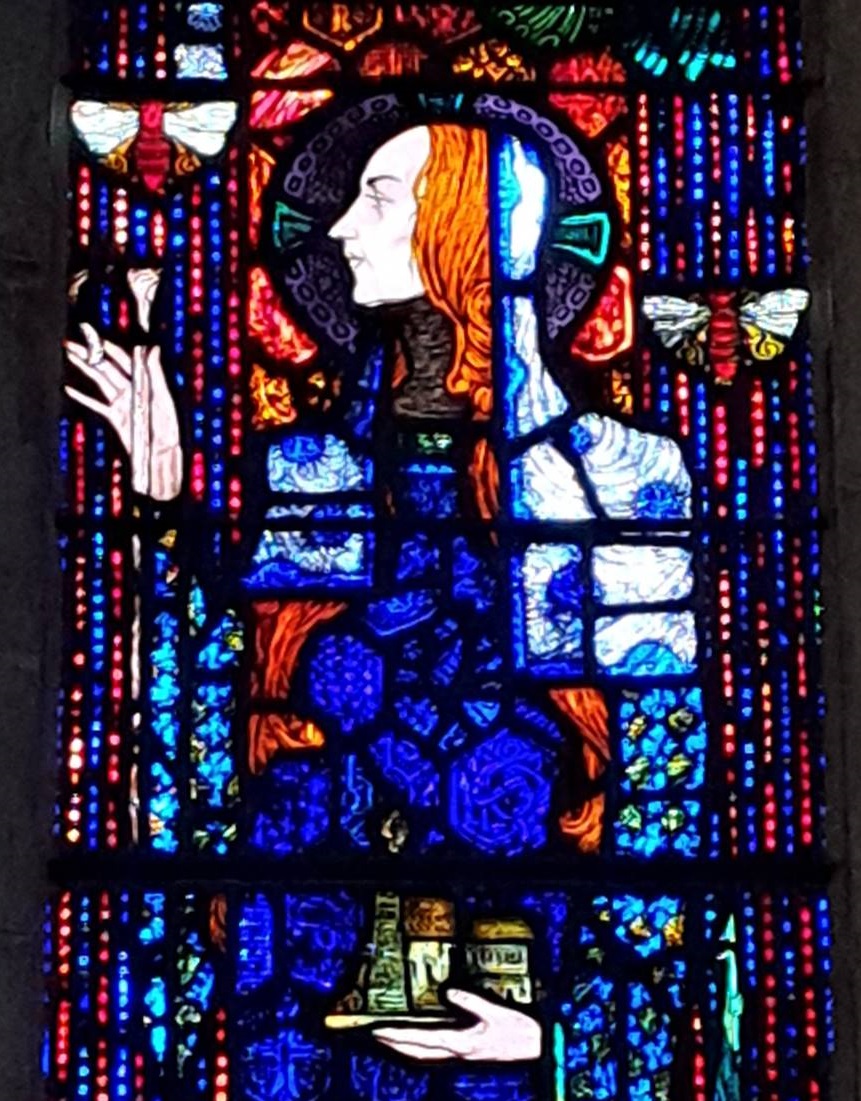
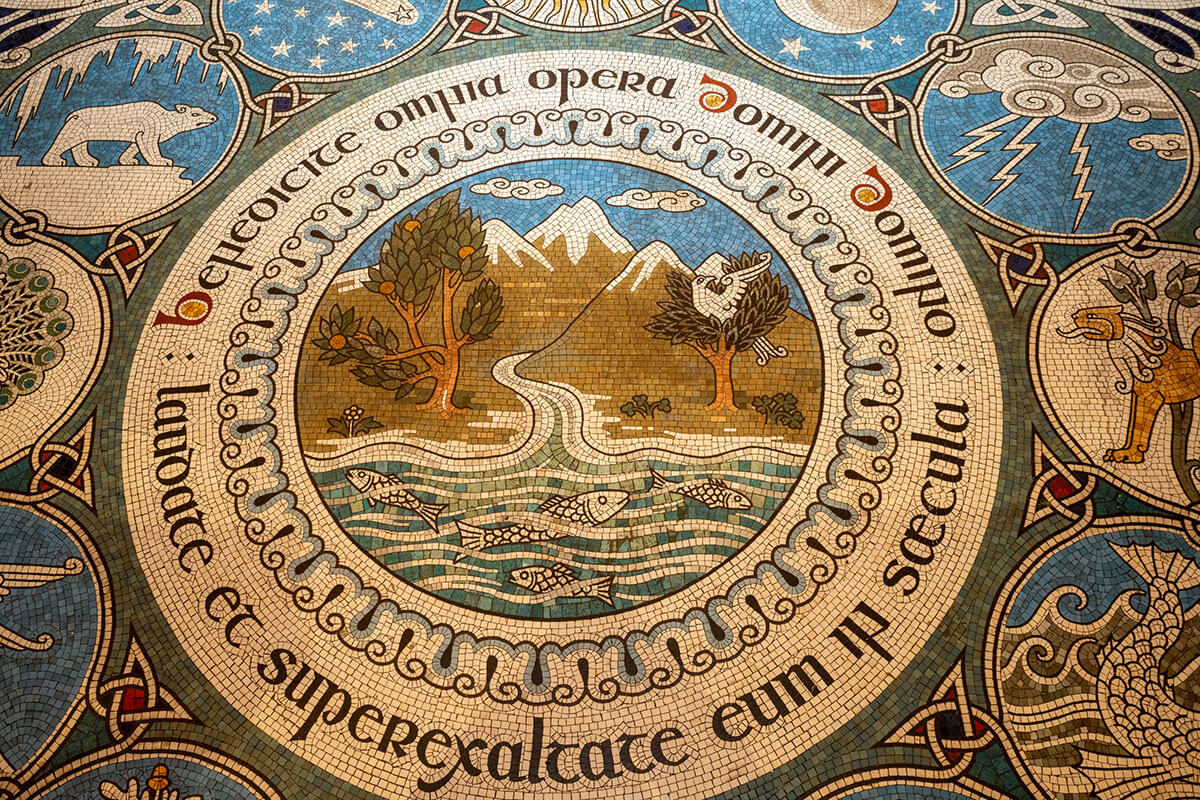
The mosaic floor and Stations of the cross
These were designed by the firm Ludwig Oppenheimer Ltd in Manchester, who worked with Irish architect George Ashlin. Lehmann James Oppenheimer and his son Eric Newton both worked on the mosaic commissions for the Honan Chapel in their family firm of Ludwig Oppenheimer Ltd., before the First World War. The brightly coloured mosaics are in a Celto-Byzantine style.
The Stations of the Cross in the Honan Chapel were also designed by Ludwig Oppenheimer Ltd., Manchester. These are made of opus sectile, a form of mosaic, popularised in the ancient and medieval Roman world where materials were cut and inlayed into walls and floors to make a picture or pattern.
The High Altar
This is made of a single slab of Cork limestone, with the tabernacle inspired by early Irish reliquaries. The arcading in the nave is inspired by Cormac’s Chapel, Cashel, county Tipperary. On the north and south walls of the nave it is comprised of shafts of polished Castleisland red marble with carved caps and moulded arch stones.
The enamel front of the Tabernacle was made by leading enamellist in Ireland in 1916, Oswald Reeves. The iconography relates to the Trinity and the Adoration of the Lamb as recalled in the Book of Revelation. In its design, O’Connell was inspired by the Adoration of the Lamb from The Ghent Altarpiece (1432) by Jan and Hubert Van Eyck. The Lamb, representing Christ, bleeds into a chalice and stands on an altar with a hanging like those in the Honan Chapel. Angels carry the Arma Christi, the symbols of Christ’s Passion: the Pillar, the Nails, the Lance, the Scourge, the Reed, and the Crown of Thorns, while another carries the Cross. Below the altar is a River of Life -recalling the river flowing from the Garden of Eden.
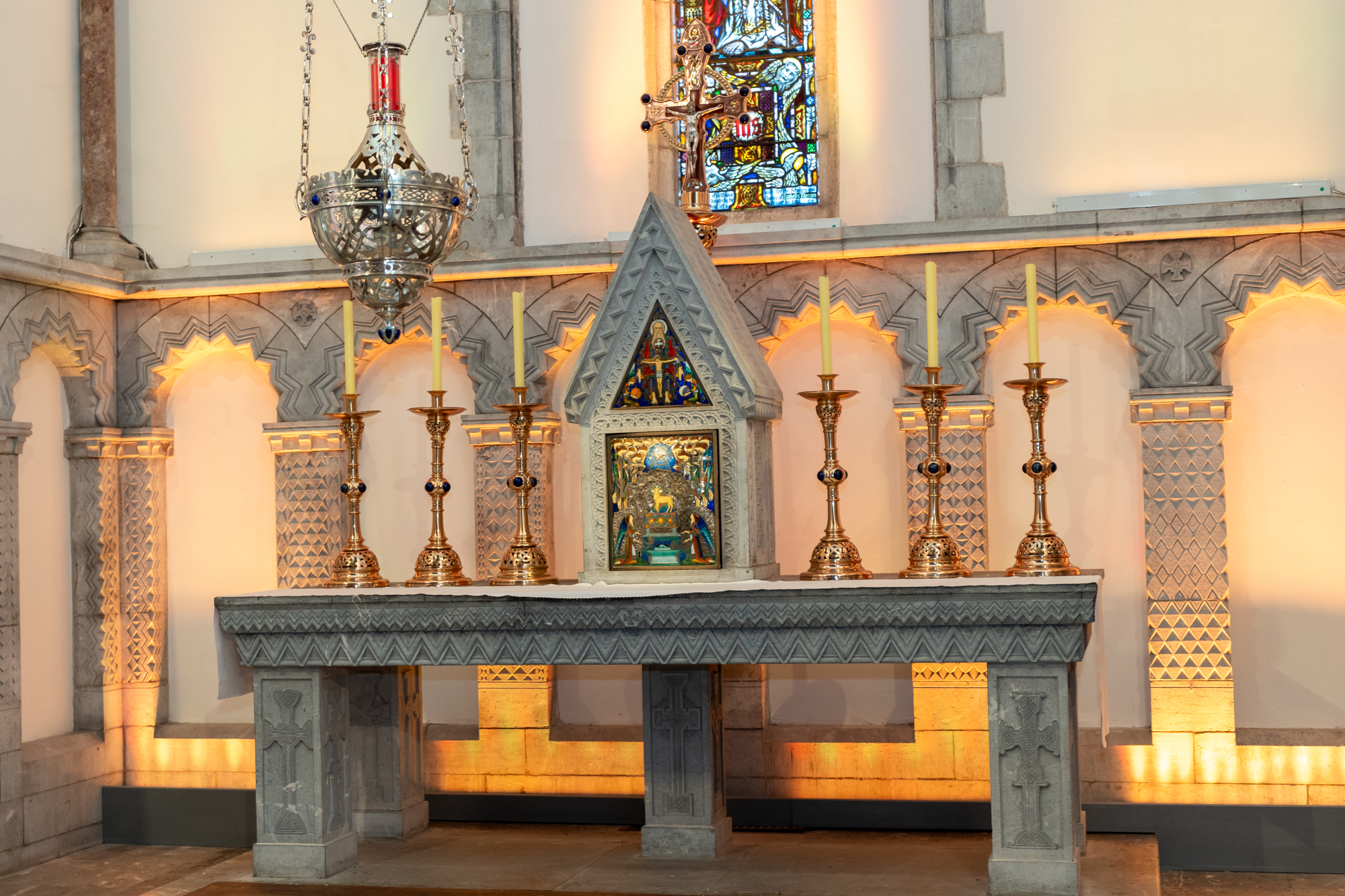
The Silver Sanctuary Lamp
This was designed by William Scott and manufactured by Edmond Johnson Ltd., Dublin.
Sacred Vessels
The Honan commission fostered the revival of silver and textile craft working, once central to the Cork economy. Two sets of sacred vessels were produced for the Honan Chapel – by William Egan & Sons of Cork and Edmond Johnson Ltd of Dublin. These items are currently in archival storage and form part of the “Honan treasures collection”.
Altar hanging, liturgical banners, and cushions
These were designed by the Dun Emer Guild associated with Susan and Elizabeth, the Yeats Sisters. The liturgical vestments were made by local seamstresses in the Egan workshop in St. Patrick’s Street, Cork. Five of the nine altar frontals and dossals made by the Dun Emer Guild have inscriptions listing the women who designed and made them: Evelyn Gleeson, Katherine MacCormack (designer) Kate Dempsey, Susan Dillon, Tina Fanning, Sheila Stapleton, Mary Corri, Mary Perry, Mary Kerley, Josephine Mulhall, and Kathleen MacLoughlin. The weavers of the red and gold tapestry dossal were Tina Fanning, Cissie Burke, May Keegan, and Lily Keegan. Some workers were young girls who put all their energies into the Honan contract as this was much-needed work during the war time years. Dublin artist, Eleanor Kelly, designed and crafted the tooled bindings of the missals.
Gallery
“A new generation of Irish, British and international artists have added significant pieces to this sacred space. Imogen Stuart, Ken Thompson, Eric Pearse, Evelyn Ross, Fr. Kim En Joong, O.P., and Mary Barry have designed furnishings, vestments, and hangings to serve the new liturgy. Kenneth Jones and Associates, responsible for building the largest organ in London – in St. Peter’s, Eaton Square –built the pipe organ. While architect Richard Hurley & Associates was honoured for his conservation work in 1987 and 1992. The Honan Chapel is not only a testimony to premier craftsmanship it also serves a living faith community and so it continues to evolve artistically.”
James G. R. Cronin, University College Cork
The Chapel Governance
In 1916, the Honan Chapel was described as the Honan Hostel Chapel and the Collegiate Church (or Chapel) of St. Finn Barr. The Honan Hostel was an incorporated charity founded under royal charter and the Honan Chapel was part of this foundation.
The board of governors was made up of bishops, members of University College Cork staff, and representatives of the Catholic laity and clergy in Munster. The bishop of Cork was appointed as the ‘visitor’ and executor of the Honan estate, O’Connell, was made a life member of the board. This form of governance continues to this day.
